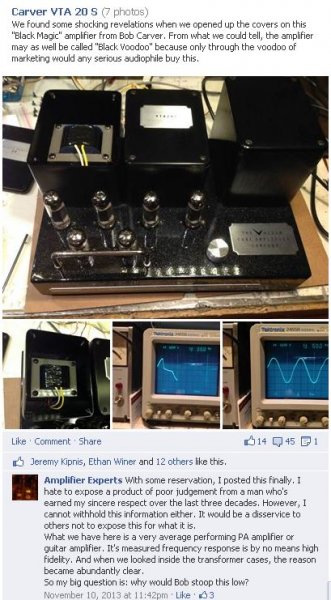A manufacturer's personal preference tends to find its way into his products. Thus it is more relevant than that of individual
I will avoid the temptation to name the impressive list of solid state amps present in the high end. But for tube glow they have similar characteristics to tube amps. If you want glow you get it from meters and l.e.d.'s
I will avoid the temptation to name the impressive list of solid state amps present in the high end. But for tube glow they have similar characteristics to tube amps. If you want glow you get it from meters and l.e.d.'s









